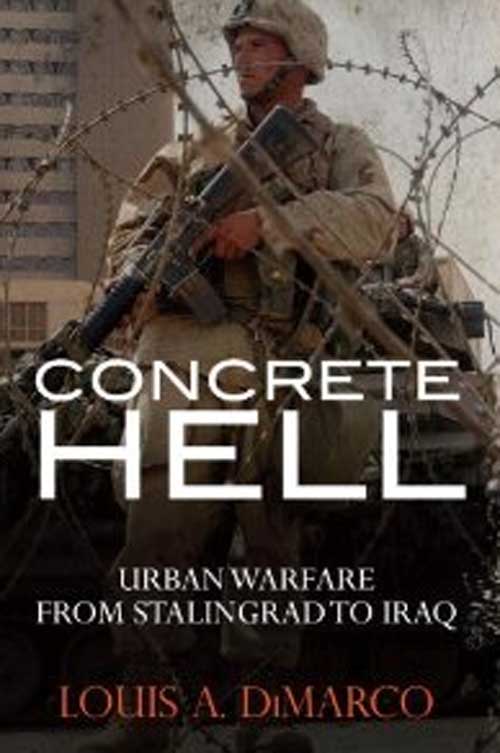Concrete Hell - Urban warfare from Stalingrad to Iraq
Review

Concrete Hell - Urban warfare from Stalingrad to Iraq, Louis A DiMarco, Osprey Publishing, 2012, £20, 232 pages, ISBN 978-1-84908-792-6.
Dr Louis DiMarco was a US Army officer for 24 years, retiring in 2005 as a Lieutenant Colonel. He now teaches military history and urban warfare theory at the US Army Command and Staff College. His thesis is that cities are expanding, with a higher proportion of populations living in them, and are the likely centres of conflict for the remainder of the 21st century. Therefore he believes that armies must equip and train with this in mind. His book sets out to demonstrate his view with a series of case studies. Libya and Syria have come too late for full analysis but he says, in the conclusion, that they lend support to his argument.
Of the case studies, Stalingrad and Aachen (a textbook operation by the Americans in 1944) are taken from general war, while Inchon & Seoul (Korea), Hue (Vietnam), Grozny (Chechnya 1995) and Ramadi (Iraq 2006-7) can be categorised as limited war situations. However the definitions are blurred between limited war and internal security operations; into the latter category I would put Algiers (1956-7), Northern Ireland, which he dates as 1969-2007, and the Israeli response to the Intifada in 2002. I am less comfortable with the inclusion of these studies, particularly Northern Ireland over such a wide time scale.
I'm not sure that Dr DiMarco totally succeeds in his argument. He has been very selective in his examples and he states that one requirement for successful urban warfare is the ability to isolate the city or town so that the defenders cannot receive supplies or reinforcements from outside, which requires a limited war manoeuvre capability. Equally it can be argued that wars will continue to be fought in the Middle East and Africa, possibly over water rights, where manoeuvre warfare is highly effective, as demonstrated in the first Gulf War and the early part of the second. The well prepared army will still need the capability to fight a variety of enemies over widely differing types of terrain.
Despite these caveats I thoroughly enjoyed Concrete Hell because it is thought provoking and the case studies are comprehensively described, illustrated and analysed. The Bibliography is excellent. I suspect that it is designed primarily for military study but it deserves wider distribution because it presents arguments that we and our governments need to consider now and in the future.

